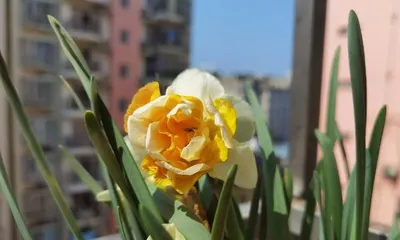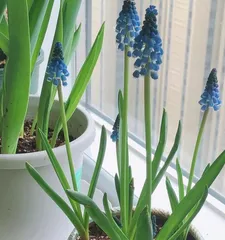Narcissus is a common ornamental plant with a long flowering period and beautiful flowers. However, to make the Narcissus flowers more vibrant and long-lasting, proper care techniques are very important. Next, this article will detail how to handle Narcissus after it has finished blooming.

1. Timely remove withered flowers
After the Narcissus has finished blooming, it is very important to promptly remove the withered flowers to prevent them from rotting. At the same time, removing the withered flowers can also stimulate the Narcissus to produce more flower buds.

2. Water on time
After the Narcissus has finished blooming, watering is essential. Water on time, and do not let the soil become too dry or too wet. Generally, watering once a week is sufficient.
3. Provide ample sunlight

Narcissus loves light, so after it has finished blooming, it should be given ample sunlight. However, avoid direct exposure to intense sunlight to prevent damage to the plant.
4. Control the temperature
After the Narcissus has finished blooming, pay attention to controlling the indoor temperature. Temperatures that are too high or too low will affect the growth of the Narcissus. Generally, a temperature of 18-22°C is most suitable.
5. Fertilize
After the Narcissus has finished blooming, you can apply fertilizer appropriately. However, avoid over-fertilization, as it can harm the Narcissus. Generally, fertilizing once a month is sufficient.
6. Eliminate pests
After the Narcissus has finished blooming, promptly discover and eliminate pests. Common pests include aphids, etc. You can use pesticides or natural methods to get rid of pests.
7. Prune appropriately
After the Narcissus has finished blooming, you can appropriately prune the leaves and flower stems. During the pruning process, be careful not to damage the plant, and leave a sufficient amount of leaf area for photosynthesis.
8. Transplant
If the Narcissus grows in the same potting soil for a long time, it will affect its growth. You can transplant the Narcissus after it has finished blooming, replacing the soil and pot to promote its growth.
9. Provide sufficient air circulation
After the Narcissus has finished blooming, pay attention to providing sufficient air circulation. You can open windows and doors or use a fan to increase air circulation, which is beneficial for the plant's growth.
10. Avoid frost damage
After the Narcissus has finished blooming, avoid frost damage. If the ambient temperature is too low, you can use insulation measures to protect the plant.
11. Keep it dry
After the Narcissus has finished blooming, keep the soil dry. Do not let the soil become too wet, as it can harm the plant.
12. Provide sufficient nutrients
After the Narcissus has finished blooming, provide it with sufficient nutrients. You can use organic fertilizers, etc., to provide the plant with adequate nutrition.
13. Loosen the soil regularly
After the Narcissus has finished blooming, loosen the soil regularly. Loosening the soil can increase soil aeration and water retention, which is beneficial for the plant's growth.
14. Check the plant's health
After the Narcissus has finished blooming, regularly check the plant's health. If you find any diseases or pests on the plant, take timely measures to treat them.
15. Pay attention to the dormant period
After the Narcissus has finished blooming, pay attention to its dormant period. During the dormant period, stop fertilizing and watering to allow the plant to rest and accumulate nutrients.
The above is a detailed introduction on how to handle Narcissus after it has finished blooming. Only by mastering the correct care techniques can you make the Narcissus produce more vibrant and long-lasting flowers. We hope that readers can care for their Narcissus according to the methods described in this article.